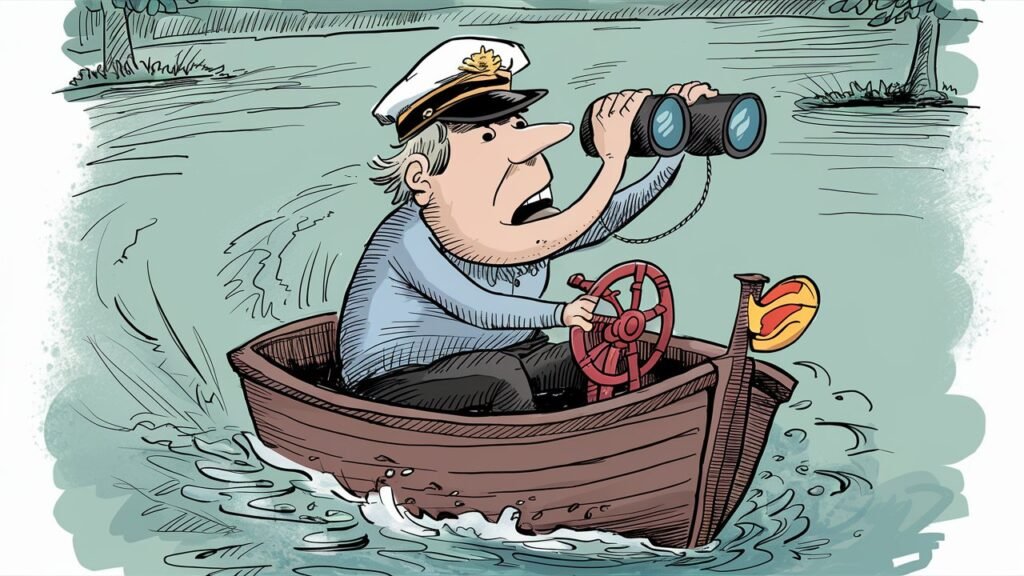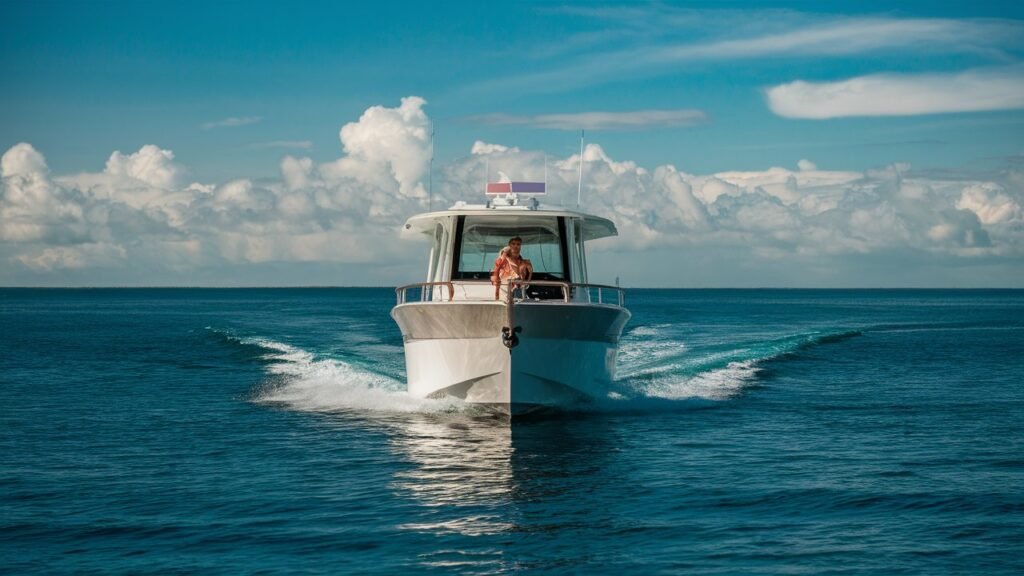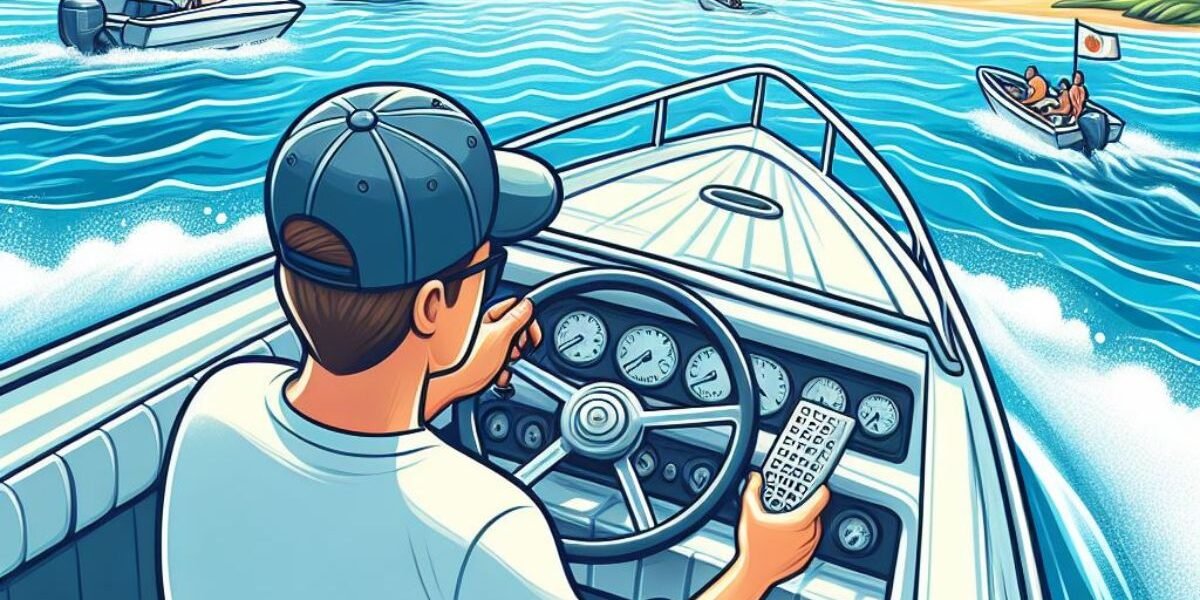Is it difficult to drive a boat?
Driving a boat can sometimes be difficult for beginners, especially if you’re new to boating.
Learning how to drive a small boat like a pontoon boat or a sailboat can seem daunting at first.
All boats contain various navigation systems, outboard motors and wheel arrangements. Before operating the boat, ensure you evaluate the weather of that day and have all safety equipment such as life jackets and insurance cover.
When starting a boat, make sure you attach the kill switch lanyard then start the engine.
To steer a boat, turn the helm to adjust speed and direction of travel in water
. If you are new to driving a particular boat always be cautious about it because any vessel can be harder to drive than expected so never drive it faster than what you would be ready to hit.
How to Start Learning to Drive a Boat
Basic Boat Handling Tips

Boating can be an exhilarating boating adventure for any boater, but it can also be intimidating for those who are new to driving and operating a watercraft.
Your time on the water could be made more enjoyable and safe for everyone onboard if you learn some basic boating tips.
Bear in mind that larger boats are more difficult to drive.
Be aware that when turning a boat, it does not react as quickly as cars do so ensure you have enough space and time for maneuvering.
When you need to slow down or stop, it’s important to know how to come to a complete stop without causing any accidents.
Avoid boating too close to other vessels or obstacles, and always keep a safe distance away from the dock.
Challenges Faced While Driving a Boat

Challenges faced while driving a boat
Piloting a boat is quite an exciting task, but also one that has challenges of its own.
Among the difficulties, dealing with uncertain weather conditions stands out as the most important.
It can become hard to safely steer through strong winds, heavy rains and choppy waters.
Another challenge is posed by busy waterways, which are common during peak boating season.
During these times it may be difficult to stay on course and avoid colliding with other vessels.
Moreover, you need skill and patience to maneuver in such places as marinas or docks where space is limited for boats.
Finally, driving a boat requires being always watchful because there can be obstructing things like floating debris or animals which may appear suddenly and endanger both the passengers’ lives and the vessel itself.
Proper Steering Techniques

Safe and effective driving require proper steering skills.
How a person steers their car determines its stability, control and general performance on the road.
You should at all times have a tight grip of the steering wheel using both hands for maximum control.
It is also recommended that one keeps his or her hands in the 9 and 3 o’clock positions which gives more control and leverage.
Do not cross your hands over each other while holding onto the steering wheel as you may lose control of it thereby causing accidents.
Remember to turn the wheel slowly and steadily instead of making sudden jerks with it.
Good steering techniques also involve looking ahead and being ready for any obstacles or turns that may be encountered on the way thus enabling quick response time.
These are some few things you can do to ensure that you drive safely no matter what.
Tips for Safely Operating a Boat
Tips for Safely Operating a Boat
Boating can be an enjoyable and thrilling pursuit, but it is essential to keep safe during this activity. The following are tips on how to operate your boat safely:
Put on a life jacket always:
Ensure that all people aboard have life jackets that fit them well because these devices might save lives in case of any eventuality.
Observe water rules:
Similar to driving, there are laws and guidelines for boating too; hence they must be adhered to strictly while operating a boat.
Therefore, take time and learn about such regulations before going out into the water.
Avoid operating a boat under the influence:
Just like driving a car, it is illegal and dangerous to operate a boat while under the influence of drugs or alcohol.
Make sure you have a designated driver if you plan on consuming alcohol while on the water.
Importance of Boat Safety Gear

Going out on the water requires boat safety gear.
Whether you’re cruising on a calm lake or sailing in the vast sea, having appropriate safety equipment could be lifesaving during emergencies.
Life jacket is one of the most significant gears to have because it keeps you floating when you fall off the boat or your ship capsizes.
Moreover, carrying first aid kits enable treatment of minor injuries and illnesses while still at sea.
Finally, a fire extinguisher should always be kept handy for any fires that may break out aboard.
By ensuring that you have the necessary safety gear on board before setting sail, you can help protect yourself and your passengers in case of an emergency.
Common Misconceptions About Driving Boats
Many people often believe that driving a boat is just like driving a car.
However, I’d say it’s false, because boating involves different skills and knowledge.
Even though some rules may be applicable, but knowing how to navigate through water bodies and being conversant with the maritime laws contribute significantly towards safety while using boats.
Another misunderstanding is that one can operate a vessel without any prior training.
This attitude can be fatal on open waters as adequate preparation and familiarity are essential for protection during boating activities.
Furthermore, another misconception about speeding boats is less dangerous than speeding cars.
However, excessive speed can still result in accidents, collisions, and injuries on the water, making it important to always follow speed limits and operate boats responsibly.
Understanding Boat Control in Water
You need to be familiar with the boat control on water if you want safety and enjoyment during boating.
When we talk about boat control, we mean being able to effectively steer or navigate a vessel under different conditions such as strong currents, waves or winds.
Understanding how a boats throttle, trim tabs and rudder work is one aspect of having good boat control in water so that it stays stable and controlled.
A person can steer where they want by these parts correctly used in addition to changing speed accordingly when required.
Knowing water dynamics together with some other handling methods may also greatly enhance ones’ ability to control their vessel;
For instance understanding how much drift should be allowed for; taking into account drag; or considering momentum while controlling movement of the ship among many more factors too numerous here mentioned.
Once a boater has learnt how to take full command of their vessel there will always be smooth sailing across any sea.
Guidelines on Speed Management
Road safety requires speed management.
A very crucial rule is to observe all the posted speed limits on traffic signs.
These limits are determined by the state of the road, traffic volume and other considerations which are supposed to guarantee the safety of all road users.
It also implies that you should change your speed basing on weather conditions, visibility and type of surface you are driving on.
For instance, one should drive slowly when it is raining or snowing so as reduce chances of being involved in an accident.
Another important thing to do is keep a safe distance behind another car especially when driving fast.
conclusion
To sum up, piloting a boat is uniquely challenging and requires skill, understanding, and experience. It might look like a tough job to drive a boat but anybody can be good at it provided they are trained well enough and given enough practice.
It would be best if the vessel was fitted with necessary equipment, maritime rules followed strictly and being watchful while on water.
Knowing the throttle control, right steering methods as well as boats having no brakes is crucial in becoming an expert in handling boats.
Fun and safety for oneself plus passengers while on water can be guaranteed through observing speed control measures among others that develop skills of controlling boats frequently by those participating in boating.




